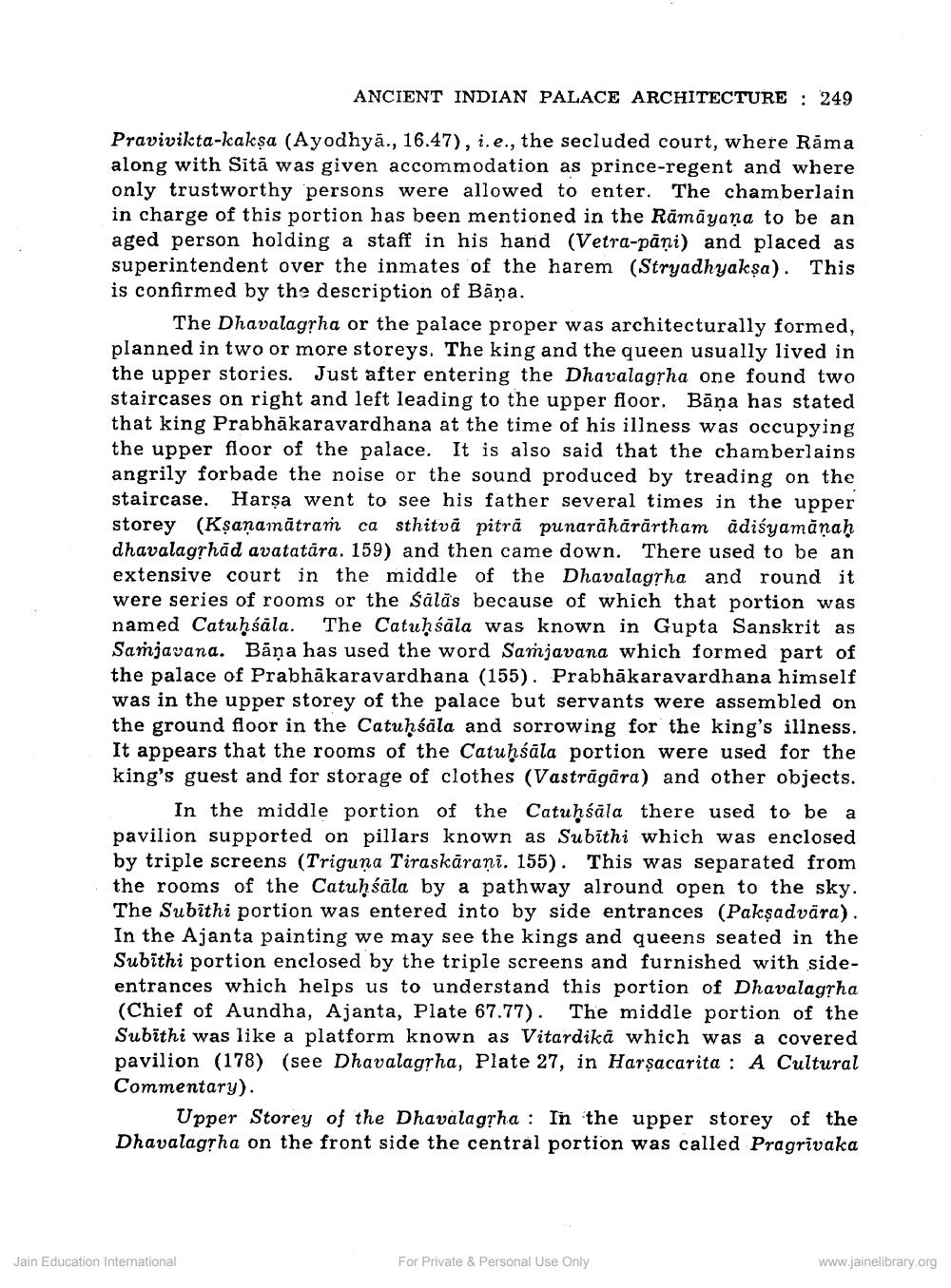________________
ANCIENT INDIAN PALACE ARCHITECTURE : 249
Pravivikta-kakṣa (Ayodhya., 16.47), i.e., the secluded court, where Rāma along with Sita was given accommodation as prince-regent and where only trustworthy persons were allowed to enter. The chamberlain in charge of this portion has been mentioned in the Rāmāyaṇa to be an aged person holding a staff in his hand (Vetra-pāņi) and placed as superintendent over the inmates of the harem (Stryadhyakṣa). This is confirmed by the description of Bana.
The Dhavalagṛha or the palace proper was architecturally formed, planned in two or more storeys. The king and the queen usually lived in the upper stories. Just after entering the Dhavalagṛha one found two staircases on right and left leading to the upper floor. Bana has stated that king Prabhakaravardhana at the time of his illness was occupying the upper floor of the palace. It is also said that the chamberlains angrily forbade the noise or the sound produced by treading on the staircase. Harṣa went to see his father several times in the upper storey (Kṣaṇamatram ca sthitva piträ punarāhārārtham ädisyamāṇaḥ dhavalagṛhad avatatára. 159) and then came down. There used to be an extensive court in the middle of the Dhavalagṛha and round it were series of rooms or the Salas because of which that portion was named Catubśala. The Catubśala was known in Gupta Sanskrit as Samjavana. Bana has used the word Samjavana which formed part of the palace of Prabhakaravardhana (155). Prabhakaravardhana himself was in the upper storey of the palace but servants were assembled on the ground floor in the Catuḥśāla and sorrowing for the king's illness. It appears that the rooms of the Catubśala portion were used for the king's guest and for storage of clothes (Vastrāgāra) and other objects.
In the middle portion of the Catuḥsala there used to be a pavilion supported on pillars known as Subithi which was enclosed by triple screens (Triguna Tiraskarani. 155). This was separated from the rooms of the Catuḥsala by a pathway alround open to the sky. The Subithi portion was entered into by side entrances (Paksadvära). In the Ajanta painting we may see the kings and queens seated in the Subithi portion enclosed by the triple screens and furnished with sideentrances which helps us to understand this portion of Dhavalagṛha (Chief of Aundha, Ajanta, Plate 67.77). The middle portion of the Subithi was like a platform known as Vitardikä which was a covered pavilion (178) (see Dhavalagṛha, Plate 27, in Harsacarita: A Cultural Commentary).
Upper Storey of the Dhavalagṛha: In the upper storey of the Dhavalagṛha on the front side the central portion was called Pragrivaka
Jain Education International
For Private & Personal Use Only
www.jainelibrary.org




